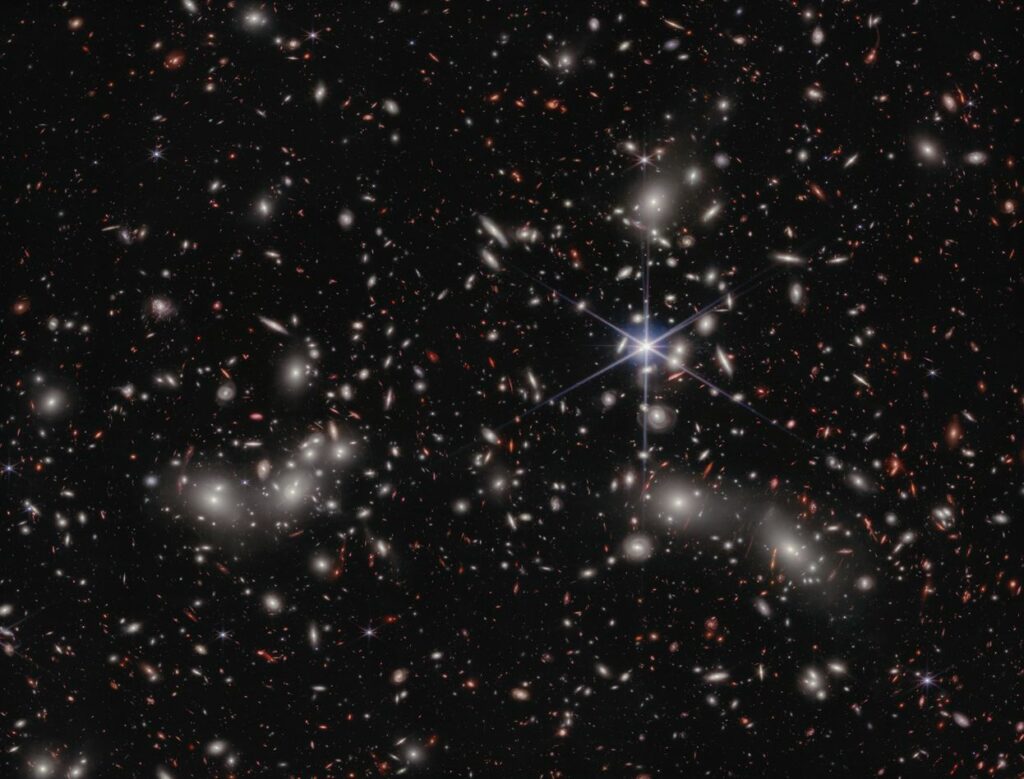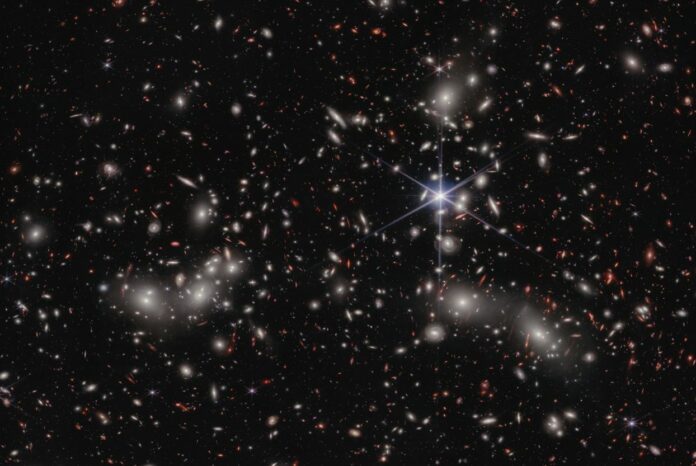Unlocking the myth of Pandora: NASA’s James Webb delivers amazing deep field image
Pandora’s Cluster imaged by Webb shows the merging of three huge galaxy clusters creating a megacluster.
The most recent deep field image from NASA’s James Webb Space Telescope reveals never-before-seen features in the area of space known as Pandora’s Cluster (Abell 2744).
Webb’s image depicts the merging of three huge galaxy clusters to create a megacluster. By acting as a natural magnifying glass, the galaxy clusters’ combined mass produces a strong gravitational lens that makes it possible to detect many more distant galaxies in the early universe.
NASA’s Hubble Space Telescope has previously analyzed in detail only Pandora’s center core. Astronomers from all over the world are currently working together as part of the “Ultradeep NIRSpec and NIRCam ObserVations before the Epoch of Reionization” (UNCOVER) program to strike a balance between breadth and depth, thereby paving the way for groundbreaking discoveries in cosmology and the evolution of galaxies.

According to Associate Professor Ivo Labbe, a Senior Research Fellow at the Swinburne Centre for Astrophysics and Supercomputing and a co-principal investigator of the UNCOVER program, they have discovered hundreds of distant lensed galaxies that seem like weak arced lines in the picture.
“Pandora’s Cluster, as imaged by Webb, shows us a stronger, wider, deeper, better lens than we have ever seen before.
“My first reaction to the image was that it was so beautiful, it looked like a galaxy formation simulation. We had to remind ourselves that this was real data, and we are working in a new era of astronomy now.”
The newly discovered view of Pandora’s Cluster combines four Webb images into an one panoramic picture that shows almost 50,000 sources of near-infrared light.
Gravitational lensing not only magnifies distant galaxies, but also distorts their appearance, making them seem extremely different from nearby galaxies. The “lens” created by the galaxy cluster is so massive that it warps the very fabric of space, causing light from distant galaxies to seem twisted as it travels across the warped space.
According to co-principal investigator and astronomer Rachel Bezanson from the University of Pittsburgh, the myth of Pandora is about human curiosity and discoveries that distinguish the past from the future.
“I think [this] is a fitting connection to the new realms of the universe Webb is opening up, including this deep-field image of Pandora’s Cluster.
“When the images of Pandora’s Cluster first came in from Webb, we were honestly a little star struck. There was so much detail in the foreground cluster and so many distant lensed galaxies, I found myself getting lost in the image. Webb exceeded our expectations.”
The cluster was photographed by the UNCOVER team using Webb’s Near-Infrared Camera (NIRCam) over the course of around 30 hours of viewing time, with exposures lasting 4-6 hours each. The Near-Infrared Spectrograph (NIRSpec) will be used for further observations to offer accurate distance estimations and thorough information about the makeup of the lensed galaxies. By the middle of 2023, we should have these new ideas about how galaxies came together and changed in the early universe.
To let other astronomers familiarize themselves with it and design their own scientific investigations using Webb’s extensive datasets, all of the NIRCam photometric data has been made available to the public.
UNCOVER co-investigator Gabriel Brammer of the Cosmic Dawn Center at the University of Copenhagen adds, “We are committed to helping the astronomy community make the best use of the fantastic resource we have in Webb.”
“This is just the beginning of all the amazing Webb science to come.”
Source: https://arxiv.org/abs/2301.02671 or
